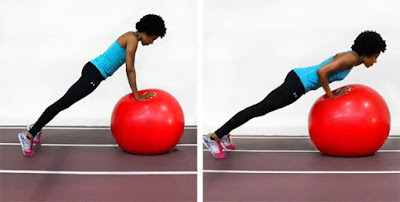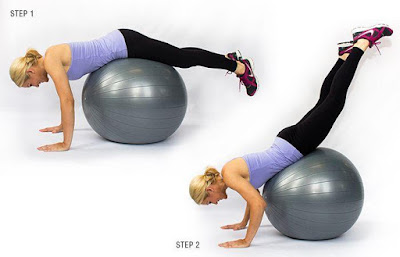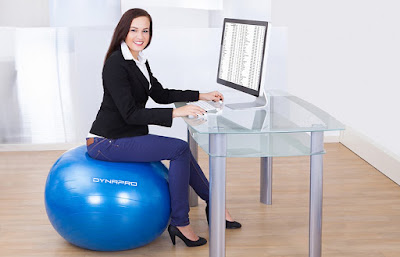In 1963 the exercise ball was created by Italian plastics manufacturer Aquilino Cosani. Initially, they were called Pezzi balls and used in treatment programs for newborns and infants.1
Exercise balls have seen their popularity increase over the years and are currently used in a variety of ways, ranging from physical therapy in a clinical setting to athletic training. There may be confusion as to what an exercise ball is, but it has a variety of names:
- Yoga ball
- Stability ball
- Balance ball
- Physio ball
- Swedish ball
Benefits of Using an Exercise Ball
Exercise balls have gained popularity among fitness activists for a variety of reasons:More muscles used. When exercising on a resistance ball as opposed to a flat surface, more muscles are used to keep the body balanced. As a result, these muscles become stronger over time.
Decrease back pain. A study in the Journal of Strength and Conditioning Research concluded that the use of a stability ball could improve posture and might benefit individuals who spend a lot of time sitting or who are prone to back pain.2
Strengthen the core. The muscles in the core are used for most daily activities such as reaching and lifting. A strong core is essential for athletes and can help improve sports performance as well as help protect against injury in everyday living.
Top Stability Ball Exercises
An exercise ball can be used in a variety of ways. Here is a full body stability ball workout routine that can be performed with or without weight:Exercise Ball Chest Exercises
Stability Ball Pushups
- Can be done with hands on the ball or with feet on the ball and hands on the floor
- Push yourself up by extending your arms and slowly lower
- Inhale when lowering body and exhale when pushing body up
- Perform 2 sets of 10-20 reps
Stability Ball Back Exercises
Stability Ball Back Extension
- Lie on stability ball with your hands behind your head.
- Squeeze your glutes and lift your torso up until your body forms a straight line.
- Repeat.
- Perform 2 sets 10-15 reps
Stability Ball Reverse Hyperextension
- Lie on the exercise ball legs down and extended
- Keeping legs extended, slowly raise legs
- Pause briefly
- Lower slowly
- Inhale while lowering legs, exhale when raising
- Perform 2 sets 10-15 reps
Exercise Ball Shoulder Exercises
Note: these exercises can be done with or without light weights.Rear Deltoid Raise
- Lie on exercise ball with back and legs extended
- Keeping arms bent, raise upper arms until parallel to the floor
- Pause
- Slowly Lower
- Repeat
- Exhale when bringing arms up and exhale when lower
- Perform 2 sets 10-15 reps
Side Deltoid Raise
- Lie on your left side on the exercise ball
- Place left arm on ball for stability with legs extended
- With right arm extended, slowly raise until arm is pointed towards ceiling
- Repeat
- Exhale as arm is extended, inhale when lowering
- Perform 2 sets 10-15 reps
Stability Ball Core Exercises
Stability Ball V-Pass
- Lie face up on the floor, arms extended, holding stability ball with both hands
- With legs extended, lift arms and legs off the ground at the same time and place ball between your feet
- Squeeze the ball with your legs and lower arms and legs simultaneously
- Raise arms and legs simultaneously and grab ball with hands and lower
- Repeat
- Perform 15-30 reps
- Start in pushup position with legs resting on stability ball
- Tighten abs and bring knees close to chest
- Hold for 2 seconds
- Extend legs
- Repeat
- Exhale as you bring legs close, inhale as legs are extended
- Perform 10-20 reps
Stability Ball Leg Exercises
Wall Squats with my Stability Ball
- Place the ball between the wall and your lower back, feet out slightly
- Slowly lower your body toward the floor in a squat position as you continuously push back into the ball
- Repeat
- Inhale as lower, exhale as you rise to standing position
- Perform 2 sets 10-15 reps
Lying Hamstring Curl
- Lay flat on your back with exercise ball under your feet
- Dig heels into the ball and extend arms into floor for support
- Roll ball towards body slowly, keeping hips as still as possible
- Slowly extend legs to straight position
- Repeat
- Inhale as legs are pulled in, exhale as legs are straightened
- Perform 2 sets 10-15 reps




















